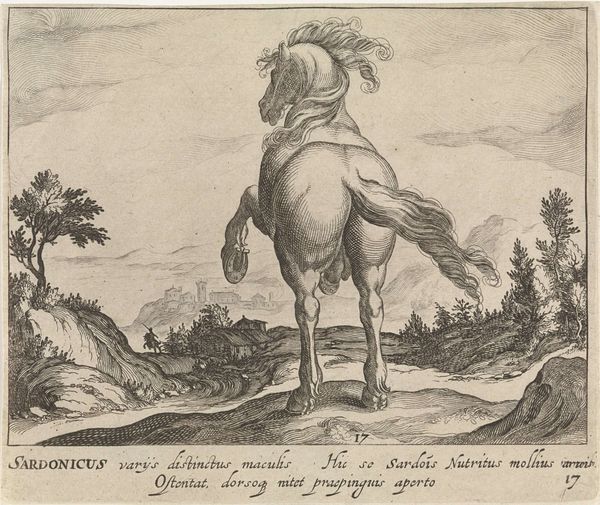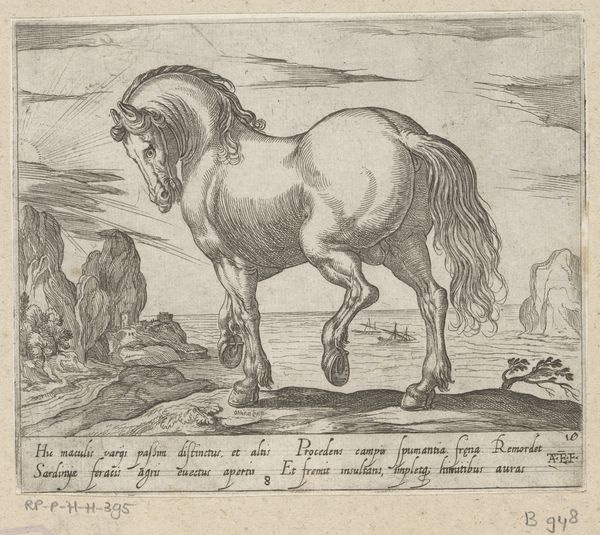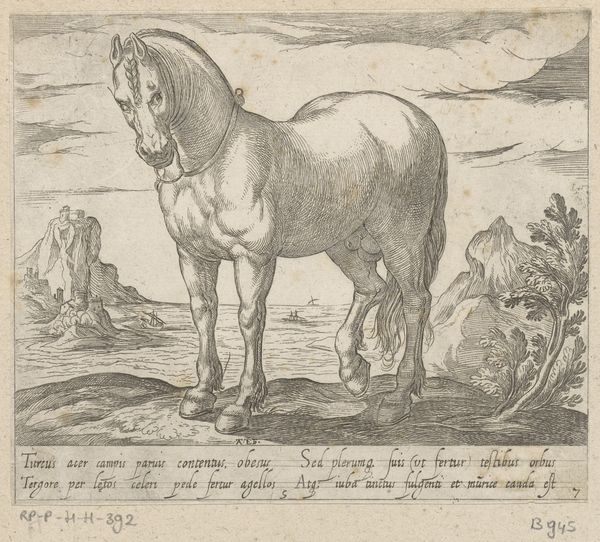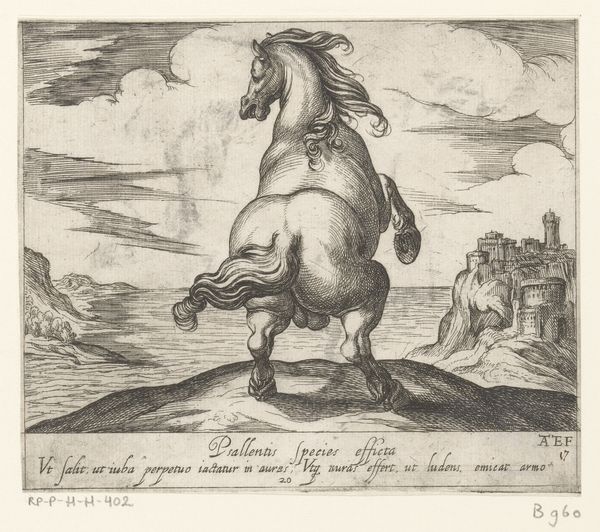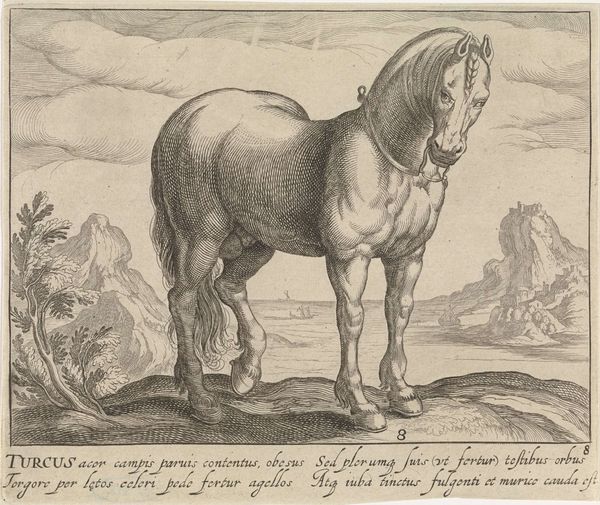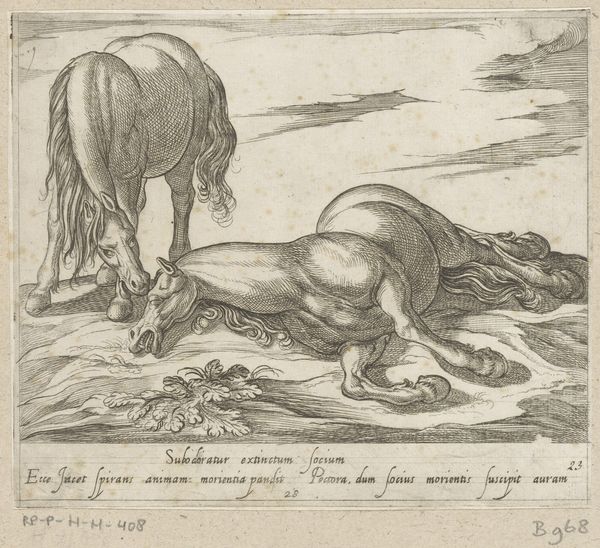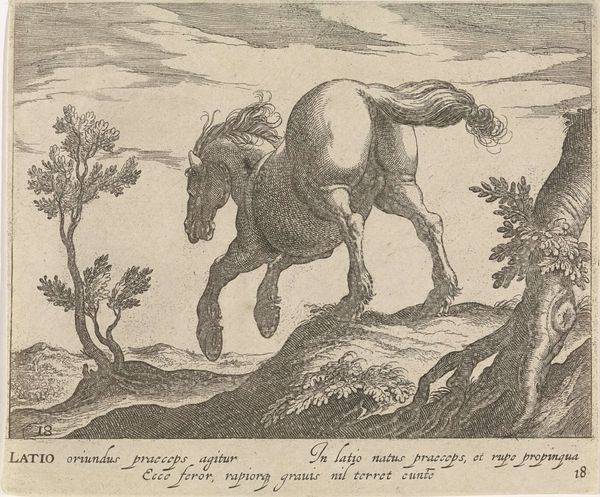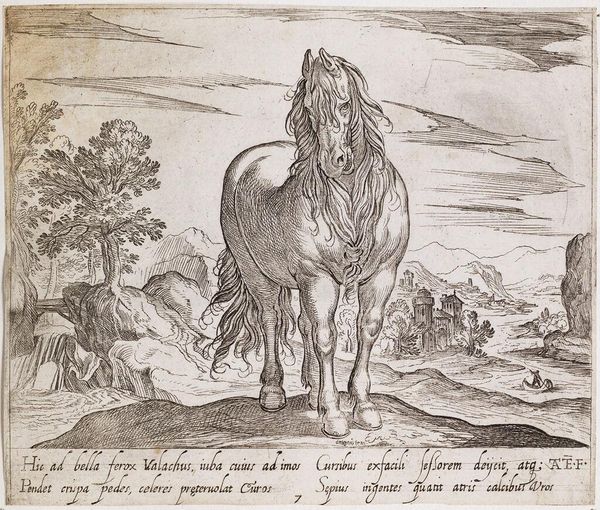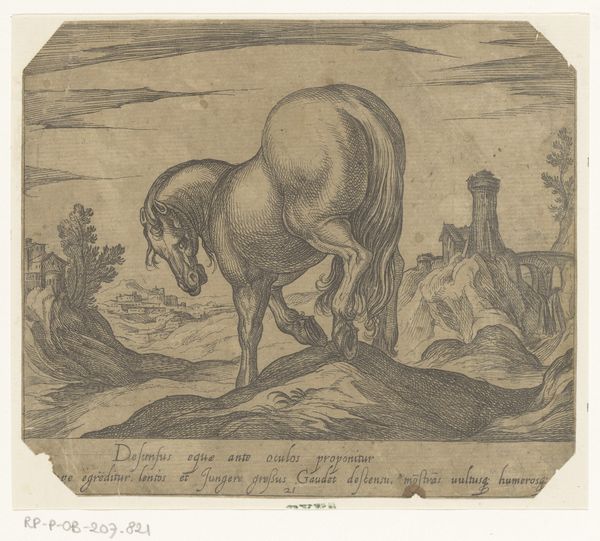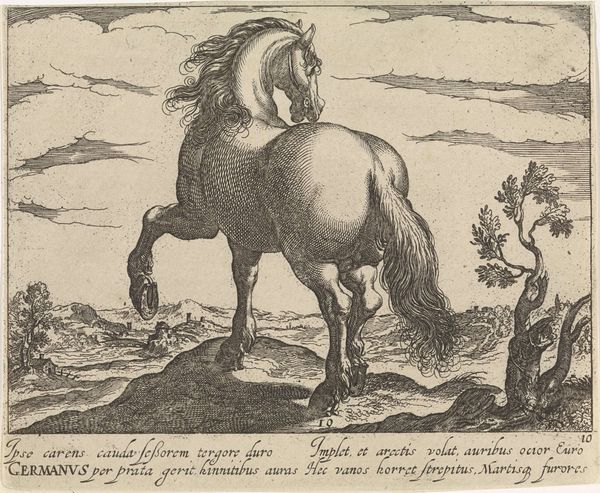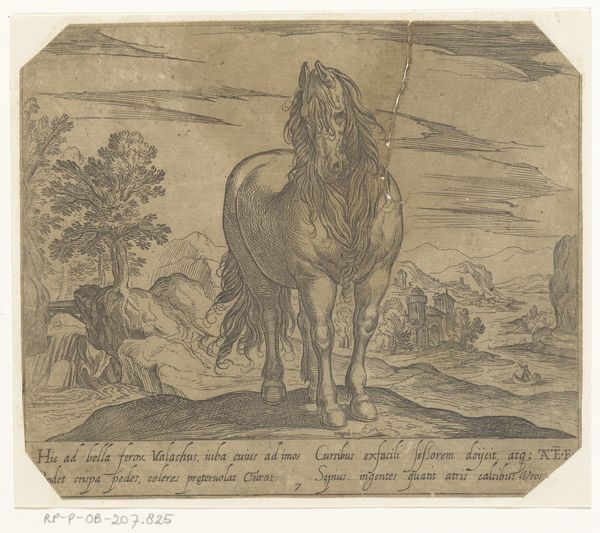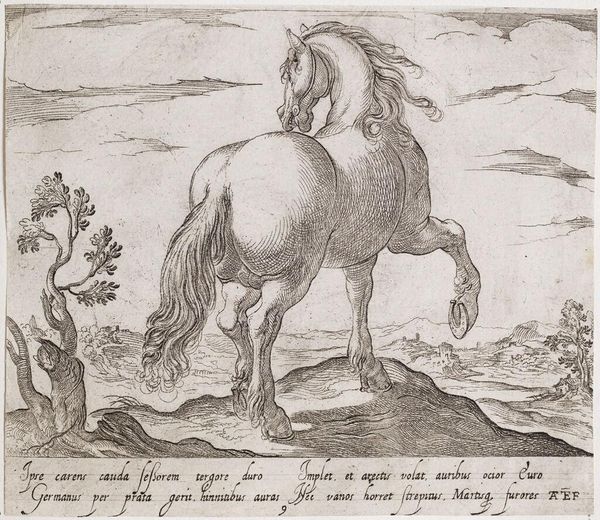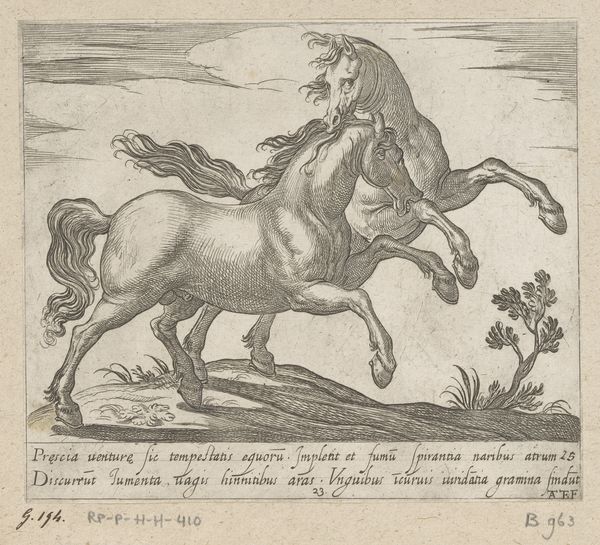
drawing, print, metal, ink, engraving
#
drawing
#
light pencil work
#
baroque
# print
#
metal
#
pen sketch
#
pencil sketch
#
landscape
#
figuration
#
personal sketchbook
#
ink
#
ink drawing experimentation
#
pen-ink sketch
#
horse
#
pen work
#
sketchbook drawing
#
pencil work
#
genre-painting
#
sketchbook art
#
engraving
Dimensions: height 141 mm, width 165 mm
Copyright: Rijks Museum: Open Domain
Curator: Here we have Antonio Tempesta's "Steigerend paard van achteren gezien" or "Rearing Horse Seen from the Back," dating back to 1590. It’s a striking engraving, currently held at the Rijksmuseum. Editor: It’s… unexpected! A rather imposing backside taking center stage. The artist directs us to a powerful physique and confident pose, like we're intruding into its personal moment. Curator: Exactly, and it's interesting to consider the symbolic weight of the horse throughout history. They have been consistently racialized as symbols for labor, strength, and often, unbridled passion. Tempesta made this work around the time of the increasing weaponization of horses in military activities, connecting these magnificent animals to themes of dominance and violence. Editor: Absolutely. From an iconographic point, it brings immediately to mind classical equestrian statues, a common motif to immortalize rulers and military figures. Though in reverse... so is Tempesta undermining the motif? Is it then about vulnerability more than dominance? It really upends the traditional reading. Curator: Indeed! And, let's consider who could afford to own horses during that period. Horses were very often class markers; they often signified status. Tempesta made an important career move by creating prints; the democratization of this format means that for the first time in European history, you had different economic and social strata of society seeing similar imagery, such as images of horses and royalty. Editor: You know, focusing on the details like the sinuous musculature and carefully etched mane suggests Tempesta wants us to appreciate its raw, untamed essence. There's definitely an allure beyond the symbolic implications of war and class. It transcends specific associations. Curator: I agree. It's that tension that keeps this image so compelling centuries later, I think. Editor: Me too. Thank you for elucidating it for us! Curator: It was my pleasure!
Comments
No comments
Be the first to comment and join the conversation on the ultimate creative platform.
